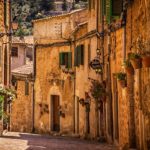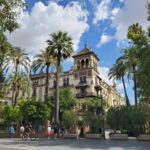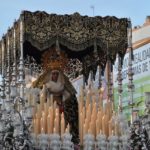Discovering Spain: 3 Things You’ll Want To Know About Semana Santa
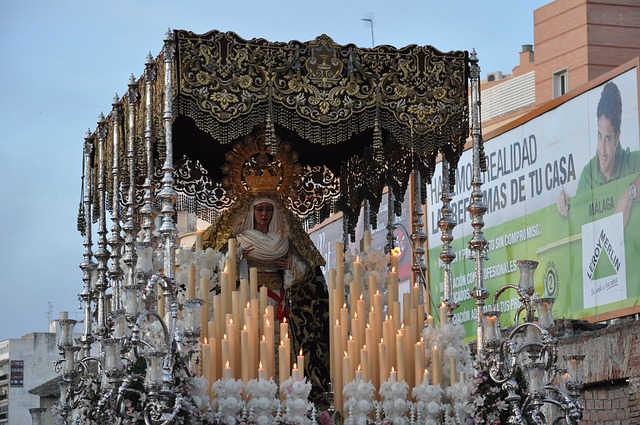
Semana Santa, or Holy Week, is a week filled with religious processions and pensiveness, and a time when Spanish Catholics pay respect and think about the suffering that Jesus experienced both before and during his death on the cross. In the past, I had only seen images on the internet and in Spanish culture lectures depicting scenes from the processions. During my semester abroad at the University of Granada, I had the chance to experience it all for myself.
3 Important Things You’ll Want To Know About Semana Santa
The Processions
We were given a week off of university for Easter so I headed to Seville for a few days, having heard that the processions there were the grandest. Once settled in our accommodation, we made our way to the Cathedral, where the processions began.
The many processions of the Semana Santa are organised by the various Brotherhoods in each church. Each Brotherhood has its own procession and colours. Nazarenes dress in robes and pointy hats, solemnly carry long candles, and are known as “the penitent ones.” Their participation in the procession is their way of repenting for their sins during the past year. Although the solemness of the processions causes a hush to fall over the spectators (some even shushing those who continue to chat), the silence is beautifully broken by the accompanying marching band.
Naturally, the main focus of the entire procession is the float, which is carried on the necks and shoulders of around 20, often barefoot, male members of religious associations. It is seen as a great honour to be part of this team. Their dedication impressed me and I often saw tired groups of carriers making their way through the crowds, ready to relieve their brothers of the extremely heavy float.
Spaniards are famous for their ability to celebrate with flair and gusto, which is one of the many reasons why I love living here.
Each float depicts a scene from either the biblical description of Jesus’ suffering or of his mother Mary. Even though I was not brought up to follow the Catholic Church, I still could not help but gaze upon the procession and the floats in respectful silence and soak in the atmosphere.
Many hands reached forward to touch the float bearing the Holy Virgin Mary, which was lovingly adorned with hundreds of flowers and candles. The dedication of the float bearers, the Nazarenes (who were not just men, but women and children, too), and the other participants amazed me. The fact that this has been a tradition in Spain for many hundreds of years and continues to be seen as the most important part of the Semana Santa is impressive.
Should you plan on visiting Seville during the Semana Santa, you need not fear missing one of the many processions. They begin in the afternoon and carry on until the early hours of the morning, and are spread out all over the city, causing many of the roads to be closed.
As my friends and I walked around Seville looking for places to eat or to follow the sound of the trumpets, we often happened upon large crowds lining the streets to allow a procession to pass.
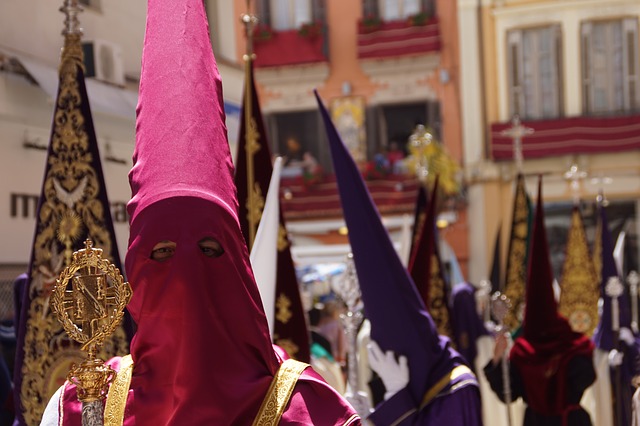
The Atmosphere
The atmosphere during this week is not just serious and religious. Spaniards are famous for their ability to celebrate with flair and gusto, which is one of the many reasons why I love living here.
The streets were abuzz with excitement, and the numerous bars lining the streets of Seville kept their doors open into the early hours of the morning for families and friends to celebrate together. I enjoyed the balance of the seriousness of the processions and the relaxed atmosphere of the bars and restaurants.
Children also joined in on the fun. I saw many toddlers and young children clutching balls of wax and approaching the Nazarenes so that the wax from their candles would drip onto them. For many years, it has been a tradition amongst children to see who has the biggest ball of wax by the end of the week.
The Differing Traditions
Another city where I witnessed the grand processions was in my current home, Granada. Even though some may argue that it does not come close to the grandeur of Seville, the backdrop of the Alhambra definitely adds something special to the experience. Additionally, there were women dressed in beautifully elegant mourning dresses walking as part of the procession.
I later found out that they were playing the role of Mary’s handmaidens. Because it’s a smaller city, there was just one procession in Granada at various points throughout the day.
Sign up for a FREE online writing workshop here.
I would most certainly recommend visiting a city in Andalusia in order to bear witness to the spectacular, if somewhat confusing, traditions of the Holy Week. Of course, as would be expected, with large crowds comes the need to be careful. Overall, the Semana Santa in Spain showed me that religious festivals are still very much a part of the culture here.
Getting to know a country’s culture helps when hoping to integrate, even for a short time.
Have you traveled to Spain for Semana Santa? How was your trip? Email us at [email protected] for information about sharing your experience and advice with the Pink Pangea community. We can’t wait from you.
Discovering Spain: 3 Things You’ll Want To Know About Semana Santa photo credits by pixabay.


